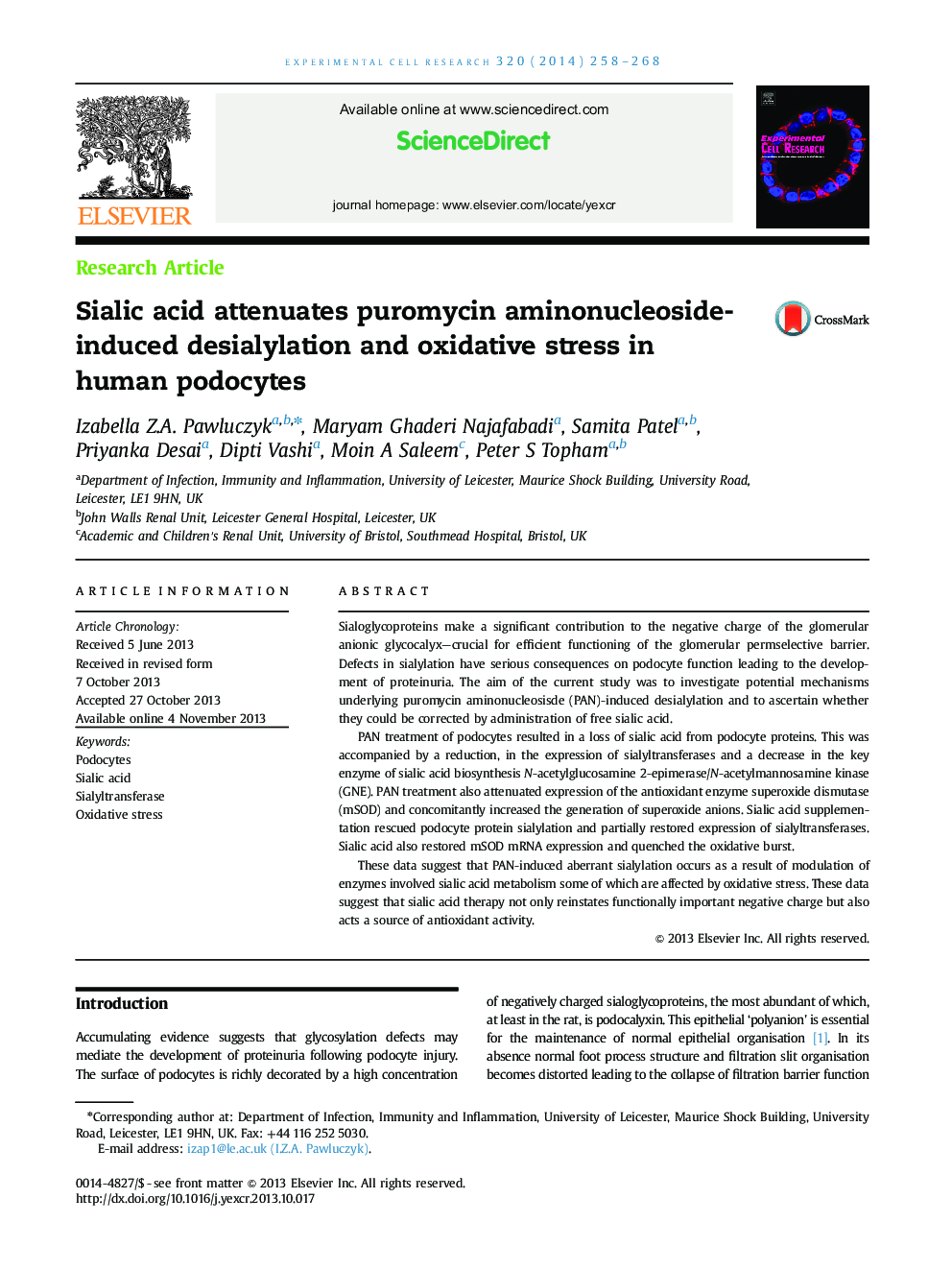| کد مقاله | کد نشریه | سال انتشار | مقاله انگلیسی | نسخه تمام متن |
|---|---|---|---|---|
| 2130388 | 1547706 | 2014 | 11 صفحه PDF | دانلود رایگان |
• PAN treatment causes desialylation of podocyte proteins.
• Desialylation may occur as a result of PAN-suppressed sialyltransferase activity.
• Sialic acid supplementation restores sialylation and sialytransferase expression.
• PAN treatment suppresses superoxide dismutase and increases superoxide anions.
• Sialic acid supplementation suppresses PAN-induced superoxide anion production.
Sialoglycoproteins make a significant contribution to the negative charge of the glomerular anionic glycocalyx—crucial for efficient functioning of the glomerular permselective barrier. Defects in sialylation have serious consequences on podocyte function leading to the development of proteinuria. The aim of the current study was to investigate potential mechanisms underlying puromycin aminonucleosisde (PAN)-induced desialylation and to ascertain whether they could be corrected by administration of free sialic acid.PAN treatment of podocytes resulted in a loss of sialic acid from podocyte proteins. This was accompanied by a reduction, in the expression of sialyltransferases and a decrease in the key enzyme of sialic acid biosynthesis N-acetylglucosamine 2-epimerase/N-acetylmannosamine kinase (GNE). PAN treatment also attenuated expression of the antioxidant enzyme superoxide dismutase (mSOD) and concomitantly increased the generation of superoxide anions. Sialic acid supplementation rescued podocyte protein sialylation and partially restored expression of sialyltransferases. Sialic acid also restored mSOD mRNA expression and quenched the oxidative burst.These data suggest that PAN-induced aberrant sialylation occurs as a result of modulation of enzymes involved sialic acid metabolism some of which are affected by oxidative stress. These data suggest that sialic acid therapy not only reinstates functionally important negative charge but also acts a source of antioxidant activity.
Journal: Experimental Cell Research - Volume 320, Issue 2, 15 January 2014, Pages 258–268
